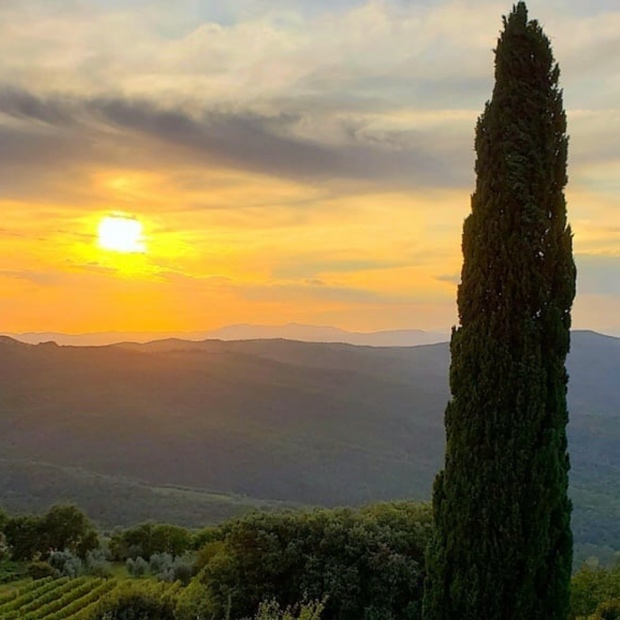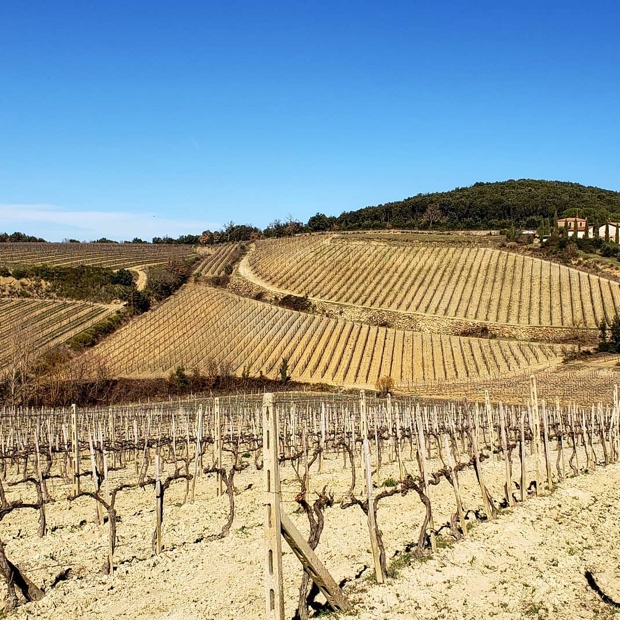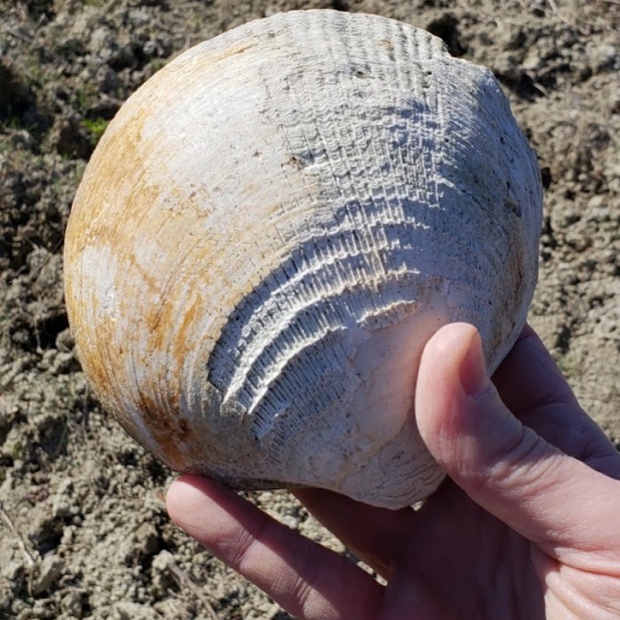Rosso and Brunello di Montalcino forever and always 100 per cent Sangiovese
Over the past four weeks in five online seminars we have been tasting Montalcino’s sangiovese while generating a high level of discourse between Canadian Sommeliers and Media to more than 20 producers of Rosso and Brunello. Isolation and global situations notwithstanding there has never been a joint action of this dimension before, a series of fortunate events that has been made possible because of the forward thinking and openness of the Conzorzio Vino Brunello di Montalcino. All because of and in the name of sangiovese, tissue of Rosso, bones of Brunello and grape of the future.
Related – Stamina and staying power: Brunello di Montalcino
In this sixth and final 2020 session it will be sangiovese that holds the spotlight, Tuscany’s most essential grape variety. On Monday, December 7, 2020 I will again play host and moderator, as I have done with the help and support from 25 producers and their sangiovese wines. “Sangiovese is the future: Montalcino’s Rosso and Brunello” the webinar will welcome agronomist Federico Staderini and Tenuta San Giorgio’s Ugolforte Brunello 2015; Sabina Sassetti with her family’s Sassetti Livio – Pertimali’s Brunello 2015; Elia Loia and Palazzo’s Brunello 2015; Andrea Cortonesi and Angela Biagiotti along with both Uccelliera and Voliero Brunello 2015.
Related – Ready for a long-term relationship? Brunello di Montalcino Vigna and Riserva
First love
We all remember our first love. We may hide the memory away and rarely speak of it but it’s always there. For me, Brunello di Montalcino was my first. In the spring and summer of 1987 I was a naive young McGill University student living in Siena. Bad hair, bad clothes, not a care in the world. My professor from the University of Toronto knew quite a lot about the wines of Toscana so when we made a class pilgrimage to Montalcino he asked if anyone would like to join him for wine tasting at the Enoteca di Fortezza during the afternoon break. All of my classmates opted for a siesta in the July shade and this at a time when there were no cell phones, computers or tablets to distract us from actually learning something. I was the only one who chose to accompany Professor Wollesen to the fortress.
In retrospect, what happened over those next few hours changed my life. It might have done the same for my classmates were they to taste, guided by a man of sangiovese experience, though 30 samples of Brunello di Montalcino 1982. If only I knew then even a fraction of what I have learned since, what value that would be for me now. No matter, for I have Professor Wollesen to thank for introducing me to the world of Brunello. And here we are.
Related – What the winemakers drink: Rosso di Montalcino
Let’s talk about clones
What about the long-employed term sangiovese grosso? The word we know as Brunello translates loosely to “little dark one”, in reference to the local vernacular name for sangiovese grosso, “fat sangiovese,” the large-berried form of sangiovese which grows in the area. While Brunello di Montalcino and the clonal sangiovese grosso have been symbiotically synonymous for decades, with clonal selection so varied, in today’s modern Brunello lexicon it is simply sangiovese that speaks to the grape of the famous wines. It is imperative to learn which clones are nurtured on each estate. This is the quintessential Montalcino situation: Estate specificity for sangiovese and cru.
Related – Backstage pass to Brunello di Montalcino
A new era in Montalcino
With thanks to writer and educator Emily O’Hare it’s worth quoting the Brunello winemaking guru Giulio Gambelli who said that “the enological trend to reduce volatile acidity as much as possible annoyed him.” While that trend certainly lasted for at least two decades it seems that traditional ways are making their return, albeit with forward-thinking winemaking in the cleanest and sharpest of ways. There is so much red fruit and sangiovese purity in the 2015 Brunello, but also the 2018 Rosso that things just seem to have opened up a new era in Montalcino.
Related – Boomers, Gen Xers and Millennials: 40 years of Brunello di Montalcino DOCG
Tenuta San Giorgio
Tenuta San Giorgio founded in 1982 is the second and sister estate to Poggio di Sotto that was founded in 1989 on the south-eastern side of Montalcino overlooking the Orcia Valley. In 2011 Poggio di Sotto became part of the ColleMassari family of wines and Tenuta San Giorgio has been a part of the group since 2016. Monte Amiata looms and protects while sea breezes blow in for 26 hectares that enjoy a unique microclimate immediately southeast of Castelnuovo dell’Abate in the southeastern part of Montalcino at 400m on the top of a ridge. Today the Tipa Bertarelli Family is the custodian of Piero Palmucci’s original vision. Claudio Tipa is the owner of ColleMassari and Grattamacco and beginning in 2011 for Poggio di Sotto and then 2016 for Tenuta San Giorgio he and his team committed themselves to the same quality standards and production techniques that have made the estate’s reputation. The same winemaking team led by Luca Marrone of nearly three decades an Oenologist Federico Staderini continue to produce sangiovese of great transparent, traditional and authentic construct.
San Giorgio Brunello Di Montalcino DOCG Ugolforte 2015
The second estate of Poggio di Sotto delivers a solid core of sangiovese fruit swagger with more than a modicum of high acid tang in 2015. Tart, driven, ultra-phenolic and on the road to both freedom and happiness. I feel they are still figuring out the nuance and the possibility of the estate and 2015 is sending the team well on their way. Drink 2020-2023. Tasted February 2020
Tenuta San Giorgio Rosso Di Montalcino DOC Ciampoleto 2018
Quite the expressive Rosso here at heights across the valley from Sant Angelo in Colle and situated at a half tier away from parent Poggio di Sotto. A well extracted and healthy macerated sangiovese that brings some structure, multiplied by the rich barrels making their seasoning statement. Really like the finish on this flashy wine. Drink 2020-2024. Tasted February 2020
Sassetti Livio Pertimali
The wines of Livio, Lorenzo and Sabina Sassetti are made at the famous northern side Montosoli hill with south-east exposure. The Podere Pertimali and its 16 hectares of vineyards are of a terroir that is some of Montalcino’s greatest calcareous clay and the soils are strewn with ancient fossils and shells. On a day of perfect blue sky the light reflects of of these white, yellow and grey soils with blinding clarity. There is nowhere else in Montalcino like it.
Livio is one of the founding 1967 members of the Consorzio Vino Brunello di Montalcino. Today Lorenzo and Sabina Sassetti are the custodians and makers for both the Montalcino and Montecucco properties and they do so with knowledge of modern oenological techniques but also in full respect of family tradition and philosophy. That may be a familiar refrain in this region but in Lorenzo and Sabina’s hands it is as they say in Italian, “è giusto e vero.”
Sassetti Livio Pertimali Brunello Di Montalcino DOCG 2014
From primarily grey arglileux (clay) soils though truth be told the variegation includes yellow, black and brown. Also found is Galestro, Pietra (like Forte) and a wide array of fossil shells, all much larger than it would be imagined. Here to the south west of the Montosoli hill is a warm and humid place so airflow is much more important than anything, to prevent disease and because ripeness is rarely an issue. The fruit is dark, hematic, all in. I tasted 45 examples of 2014 this morning and none were like this. It’s also silky smooth without any oak sheathing, make-up or cake icing. Salumi notes define the curative nature, acids are fine and driving, a high-toned moment is slightly Bretty and tannins are super smooth. High quality from 2014. Drink 2022-2032. Tasted February 2019
No shortage of reductive sangiovese funk comes off the nose of this well on its way to aging Brunello. Though the secondary dilemmas of oxidation, dried fruit, old leather and seeping cherries are amassed at this stage, the acidity rages quite evocatively and with what seems to be tremendous purpose. The grand old bariques honesty working with great fruit intensity gives this the kind of old school charm that is rapidly disappearing from the likes of Brunello, Barolo and Rioja. You have to appreciate your tolerable level of Brett, the gritty char, animale and ferric tendencies of these types of reds. More often than not I can find it in my heart and from my palate to abide. Drink 2018-2024. Tasted October 2016
Sassetti Livio Pertimali Brunello Di Montalcino Riserva DOCG 2012
Finally a nose of something not just recognizable but exacting and necessary for Brunello di Montalcino from this frazioni just to the northeast of the village. Dark cherries, rich and luxurious dark cherries. That and a cool minty savour plus a creamy gelato that silkens the palate. The grip and force are 2012 but the refinement is all 2012 and Sassetti. A very stylish Brunello and not even yet entered the zone. Drink 2021-2035. Tasted February 2019
Palazzo
A great story. Perhaps it was by coincidence or by a curious sign of fate, but in 1983, Cosimo Loia bought the estate “Palace,” which bore the same family name of his wife Antoinette. The Loia-Palazzo family’s property in the southeast of Montalcino covers a total area of 12 hectares, of which four are cultivated with Sangiovese Grosso. Their approach is “Integrated Agriculture” using only organic farming methods. The terroir is mainly Galestro marl, but is also rich in limestone. In 1986 they began producing wine, along with their children. The first harvest was 1995. The work is still presided over by Cosimo and Antoinette, along with their son Angelo and daughter Elia.
Palazzo Brunello Di Montalcino DOCG 2013
From vineyards just directly southeast beneath the village of Montalcino there is a blessed, unobstructed warmth in this wine from a mixed idea vintage. Carries in its mid-weight stride the classic cherry-leather liqueur of central-south Montalcino sangiovese. It’s both traditional and sweetly spiced, with anise, nuttiness and a clearly transcribed Montalcino vernacular. It’s lovely Brunello is what I’m trying to say. Drink 2020-2030. Tasted October 2018 and March 2019
Uccelliera
The name Uccelliera translates as “aviary” or “birdcage” in Italian, probably dating back to the Middle Ages when falcons where raised in the area. Today the estate holdings are 6.5 hectares of vineyards on different exposures planted to sangiovese in the southeast of Montalcino within the frazione of Castelnuovo dell’Abate, quite proximate to the Abbey of Sant’Antimo and also one of seven or so estates that are situated closest to Mount Amiata.
Andrea Cortonesi’s first Brunello vintage was 1991 but his work in the vineyards goes back much deeper and further. He was the cellar master at Ciacci Piccolomini d’Aragona until 1990 but also had a hand in helping to create many Montalcino estates, including Poggio di Sotto, La Torre, Poggio degli Ulivi, Mastrojanni, Tenuta di Sesta, Collosorbo, Sesta di Sopra and Podere Salicutti, many of them through the planting of their vineyards. Andrea purchased the Uccelliera farm in 1986 and planted in 1987. That he worked alongside some Montalcino giants of agriculture and oenology is not nothing. Giulio Gambelli, Roberto Cipresso, Maurizio Castelli, Alberto Antonini, and Attilio Pagli are some of those famous names and Andrea might just be the region’s greatest student, collaborator and torch-bearer. I am sure he also has some great stories. The year 1998 was when he was able to dedicate himself full time to Uccelliera. He is first and foremost a farmer. Andrea writes, “how can I believe that everything begins today just because I produce Brunello? Farming today requires considerable individual dedication, but that does not mean that it can be seen as a vocation to solitary labour. Growth must be collective, since if my neighbour makes mistakes, I will suffer the consequences, and vice versa. This is the reason I dedicate time to mutual agricultural concerns, to meetings, to the study of all those things that, apart from work in the fields, are part of our world. Our work has serious meaning for all of our society, so it bears doing with conscientiousness and responsibility.”
Voliero
Another name for Uccelliera is Voliero, “birdcage” in Italian and the story behind Andrea Cortonesi’s second label is a good one. In 2006 he was running his own restaurant in Siena called Il Casato and a friend of his in Montalcino offered him grapes from a vineyard in the Canalicchio cru in northeastern Montalcino to make a private label wine for the restaurant. The wine was made from those grapes through the 2008 vintage but in 2009 Cortonesi switched to Castelnuovo dell’Abate and 200 metres higher elevation vineyards from which to source Voliero. With the 2020 vintage Andrea will make his 12th Voliero and while it only produces 1,000 cases max of Rosso and Brunello it is now imported into North America.
Uccelliera Brunello Di Montalcino DOCG 2014
A combination of sweet fruit and volatility gather in this tart yet reductive Brunello. The fruit is quite gregarious and almost generous. Hard to figure though because the tannins are also somewhat soft. Will drink well for a few years. Drink 2020-2023. Tasted February 2019
Uccelliera Rosso Di Montalcino DOC 2017
Twitter: @mgodello
Instagram: mgodello














